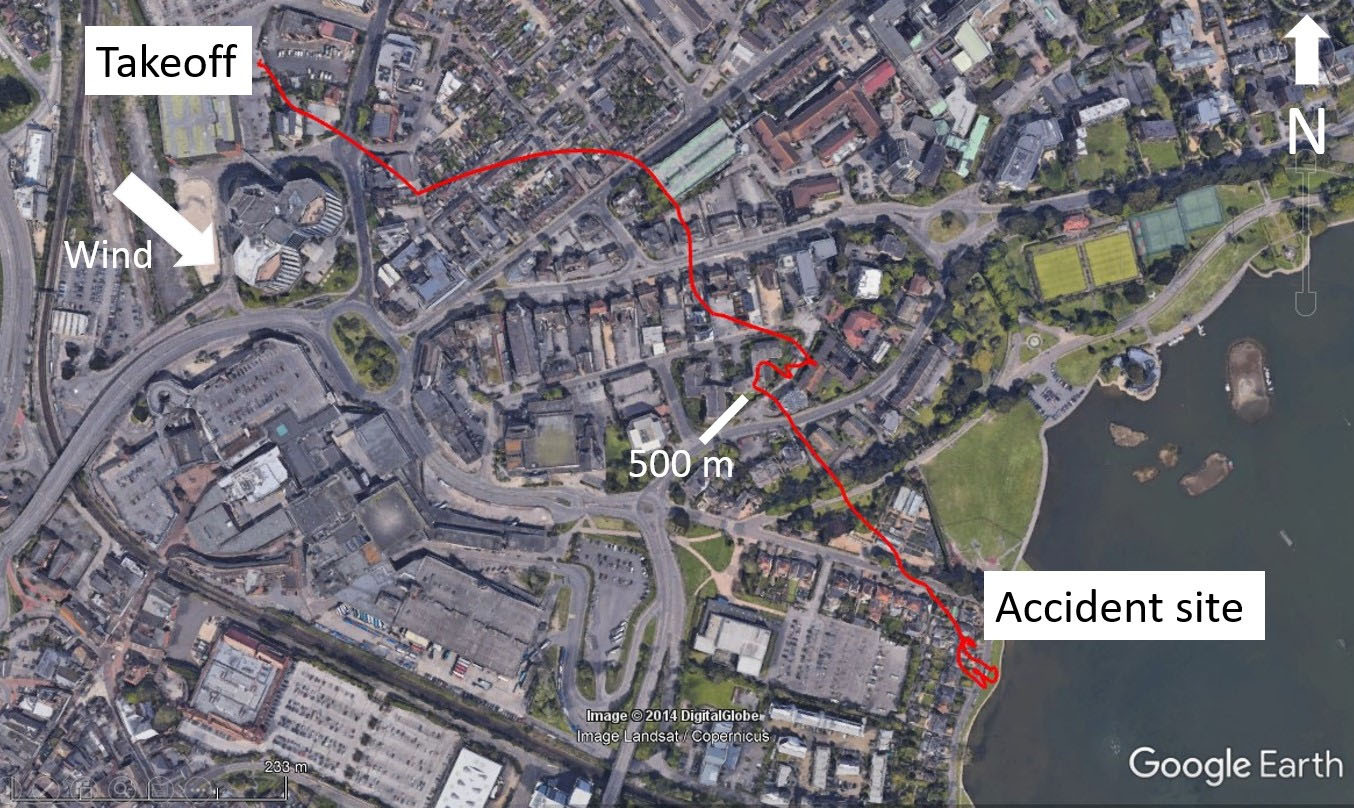
The UK Department of Transport has just released a report that details how a police officer lost control of his DJI Matrice 210 (M210) V1 drone before it crashed into the first-floor balcony of a house. Although no one was hurt, the report warns that “people could have been seriously injured by the propeller blades” if the balcony had been occupied.
The incident took place on November 19, 2020, in southwest England. The drone was being flown during a police operation when the wind at 400 ft exceeded the forecast wind as well the maximum wind resistance limit stipulated by DJI.
The drone quickly drifted beyond the visual line of sight (BVLOS), after which communication with it was lost. When the battery got critically low, the drone entered into an auto-landing mode. However, it ended up colliding with the wall of a house and damaging its propeller blades before coming to rest on a balcony.

An investigation into the episode by the Air Accidents Investigation Branch (AAIB) has revealed that shortly after takeoff, one of the drone’s two batteries had disconnected – which resulted in its maximum speed being restricted. But this restriction is not referenced in the M210’s user manual, and neither the remote pilot nor the operator was aware of it.
Curiously, the disconnected battery functioned normally when fitted to another drone later. So, it is probable that it was not fully pushed into place before takeoff.
Meanwhile, the AAIB didn’t take kindly to another point – the manner in which the safety advisory was issued on the drone remote controller. According to the report, once the wind resistance limit had exceeded, the message triggered on the operator’s controller display said “Fly with caution, strong wind” – and not that the limit had been surpassed and that the drone should be landed as soon as possible.
Naturally, DJI was called in to support the investigation. While stressing that drones are “the safest form of aviation the world has ever known,” DJI complied, saying:
We have long believed that incidents and accidents involving drone safety must be investigated to understand their causal factors. DJI routinely participates in regulatory efforts around the world to gather safety data on drone performance, study drone safety factors in academic experimentation, and investigate drone incidents.
The drone manufacturer was then provided with safety recommendations by the AAIB, including amending the wind warning messages and explaining the effects of partial battery disconnection in the user manual.
Today, the M210 drone is no longer in production. It has been replaced with the updated Matrice 300 RTK series. The UK police department in question has also replaced its fleet with the new aircraft.
But the lessons from the 2020 crash have not been forgotten. In fact, both DJI and the police department have made several enhancements to ensure safer skies, including:
- Drone operators being reminded about reading notifications on the screen and keeping an eye on the bell in the top left corner. Any new notifications are highlighted with a red number. So, if a pilot missed one, they can click the bell to see any warnings that have been shown.
- A buddy check system within the police department, mandating two crew members to confirm the integrity of the battery and that it is secured into the drone correctly. Meanwhile, DJI has introduced a new safety clip on the M300 to secure the batteries in place. So much so, the drone will not allow a pilot to start the motors or takeoff unless this clip is in place.
- The M300 also displays wind speed and wind direction in the pilot app (in ms/sec) whilst flying, so pilots are aware of the maximum operating limits. The UK police operators are now trained to keep an eye on this metric also during flight.
While there’s no denying that DJI’s record on safety initiatives is impressive, the UK flyway could have resulted in something far more serious. We’re glad to see both the drone manufacturer and operator not just pledging to do better, but actually pulling up their socks and delivering on the promise. After all, this is still an emerging technology and crucial lessons will be learned along the way.
Read more: How the new DJI M30 drone helped save a life even before launch
FTC: We use income earning auto affiliate links. More.




Comments